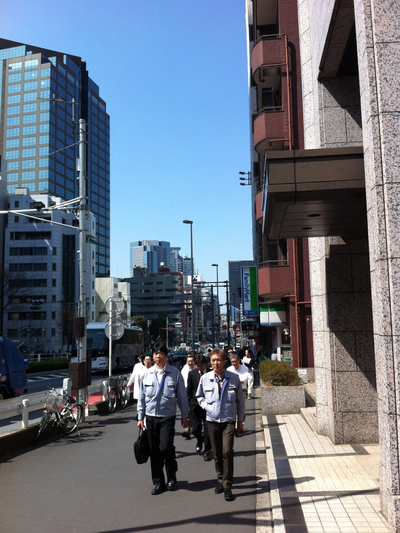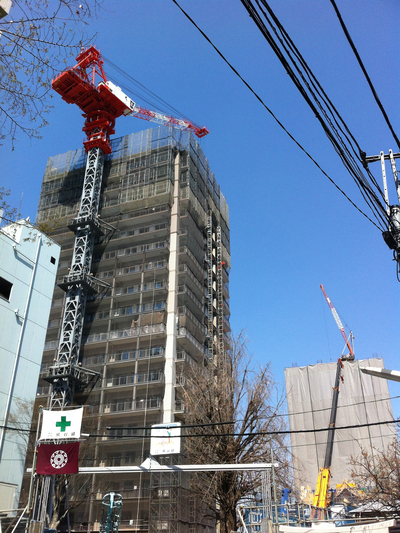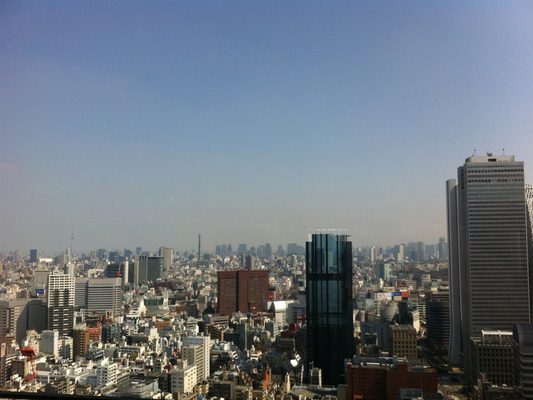- I took my first trip to Tokyo in just over two years, and I left deeply divided about the market there.
- On one hand, I think the aggressive monetary stimulus that is central to “Abenomics” is precisely the right remedy for what ails Japan most: deflation.
- Also, my research on specific companies (mainly small and mid-sized ones) suggests that there are segments within corporate Japan that are in good health.
- However, I am concerned that Abenomics will stoke intensely speculative “mini-bubbles” in a narrow group of financial assets. If those bubbles pop violently in the near term, financial chaos will likely ensue, in which case Abenomics might be discredited and withdrawn before it can lift expectations for inflation.
- If that happens, Japan will have few policy options left, and global investors may turn their back on Japanese financial assets and the yen.
- My conclusion is that the Fund will retain a small exposure to Japan, in select companies, based on their individual merits. I expect those investments to perform well over the long-term; however, I also expect the Japanese market to offer a very volatile ride, especially in U.S. dollar terms.
My first trip to Tokyo in just over two years left me deeply divided about the market there.
First, some general impressions: I was happy to observe that the city was back on its feet following the natural and nuclear disasters of 2011. I understand that radiation levels are still elevated in certain parts of the country, but based on the data I gathered, Tokyo’s radiation has declined to near-normal levels, happily. Meanwhile, life in Tokyo is evidently returning to normal, even though the city struck me as being a bit quieter, and somehow even a little sadder, than it was before.
There was one notable jolt of excitement, though, and it came from an unusual source: politics. Usually, Japan’s fleeting governments are remarkable only for their inefficacy and the brevity of their existence. Not so now: Shinzō Abe, prime minister of Japan in 2006-07, won re-election to the same office in late 2012. Triumphant in his return, Abe has vigorously pursued shock therapy for the moribund economy. His new policies, known colloquially as “Abenomics,” combine fiscal stimulus with aggressive monetary policy in a bid to kick-start growth.
Palliative or Cure?
Abenomics is controversial, to say the least. However, I’ll be as clear as I can be on where I stand: after studying Japan’s economy for the past decade, I firmly believe that aggressive monetary policy is the correct prescription for one of Japan’s worst ailments – deflation.
Japan’s economy suffers from many disorders, but there are two problems that plague the country above all others. The first is the country’s shrinking populace. Japan’s declining population means that consumption (and therefore the economy) is structurally programmed to shrink. There is no simple remedy for this, short of immigration reform; and such reform is almost beyond contemplation within the political landscape. The country’s second (and equally grave) malady is entrenched deflation. Falling prices exacerbate the structural decline in consumption, and it is deeply corrosive to both corporate profits and the economy as a whole. However, unlike the country’s demographic decline, deflation can be treated, and possibly resolved. By aggressively targeting deflation, Prime Minster Abe is at least treating the one critical disease he might hope to cure.
Some of the Patients Alive and Kicking
My time in Tokyo was spent visiting companies, not analyzing Abenomics; and I was mostly pleased with what I observed.
For the past decade, the standard narrative about Japan’s economy was that it was littered with “zombies” (highly-indebted, unprofitable and near-bankrupt companies) that sucked the lifeblood from the economy. I can confirm that Japan has suffered more than its share of such zombies. Yet at the same time, I believe this narrative was exaggerated, as there are now (and always have been) substantial swathes of companies (mostly small and mid-sized ones) that are in good health.
This segment of corporate Japan is in good health precisely because it never enjoyed the political patronage and financial life-support that sustained the zombies. Instead, such companies have survived – and even prospered – because they have been forced to compete in the global economy without subsidy, and on market-based terms. Most enjoy healthy balance sheets as well, either because they had a cultural aversion to debt, or because they received no favors, and thus were financially self-reliant.
Some of these companies have managed to eek out a few percentage points of revenue growth along the way. This may not seem like much, but remember they have done so despite operating in an economy that is structurally programmed to deliver falling volumes and deflating prices. Under such conditions, I think even low revenue growth is evidence of strong execution. Even better, many of these same companies have preserved healthy cash margins, often well in excess of 10%.1 They have done so by unrelenting focus on cost control and productivity enhancements.
In the past, most of these companies had focused solely on the domestic market; their smaller size meant they lacked the resources and sophistication to invest overseas. Yet the search for growth has forced them to overcome such challenges, and many have launched overseas expansion programs during the past five years or so. Overseas markets have given these companies a new avenue for growth, apart from the declining volumes and deflating prices that plague their home market. This new growth, combined with steady execution and disciplined cost control, has typically resulted in enhanced profitability.
A few examples might illustrate my point. I visited one company on my trip (focused on food additives and bio-pharmaceuticals) that was determined to drive growth and improve shareholder returns. In that regard, I was impressed with its “corporate hustle.” In the past two years, it had done all of the following:
- Sold off (at a decent price) one business segment formerly classified as “core,” but whose products had become commoditized, and whose profits had become weak;
- Sold control and de-consolidated another business segment in the same condition;2
- Launched several major investment programs to target growth overseas, especially in China and emerging Asia;
- Used its excess cash to launch a share buyback;
- Voluntarily curtailed production in certain products, so as to preserve profit margins in lieu of chasing top-line growth;
- Used its excess cash to research and directly acquire (without a bank or broker) a private U.S. firm engaged in bio-pharmaceuticals;
- Launched a joint venture with a Korean company, engaged in research and development, again in the bio-pharma sector;
- Restructured its research and development to focus on more profitable product segments, inclusive of a commitment to outsource such R&D where it was more cost-competitive to do so.
Another company, a beverage-maker, had undertaken the following in the past two years:
- Launched several new product lines, at home, in the U.S., and in emerging Asia;
- Initiated beverage production within the U.S., and then imported some of the product back to Japan as a high-end canned coffee drink;
- Used its excess cash to acquire and turn around the Japanese division of a major international coffee-chain;
- Used its excess cash to acquire and turn around a drinkable-yogurt company;
- Acquired a control stake in a vending machine company in Japan in order to enhance its domestic distribution;
- Launched subsidiaries, joint-ventures and representative offices in China, Singapore, Taiwan, Vietnam and Myanmar.
Both companies are profitable and have healthy balance sheets. Do these companies seem like sleepy “zombies” to you?
A “Go-For-Broke” Curative
Given that I believe Abenomics offers some hope, and also that I can identify a segment of corporate Japan in good health, why is my enthusiasm for Japanese equities tempered?
The obvious answer is that Abe’s policies have the potential, on paper, to cause severe dislocation in the yen. I can’t dismiss this risk, but I am less worried about it than many folks. Instead, my chief concern is that Abe’s policies realize too much success, too quickly, in a very limited manner. I am concerned that Abenomics will struggle to produce a steady, broad-based change in inflation expectations, which is the ultimate goal. Instead, I am afraid that Abe’s policies are far more likely to create highly volatile conditions for a narrow group of financial assets without producing a lasting effect on the broader economy.
My fear is that Abe’s policies will stoke short-lived, wildly-speculative mini-bubbles in certain stocks, bonds and REITs. Indeed, I think this is already happening: in my view, certain asset prices already appear distorted. While such prices are rising, observers everywhere are prone to cheer. But what happens if some mini-bubbles pop violently? What are the likely social and political repercussions? My best guess is that the monetary stimulus will be discredited and withdrawn before it can lift expectations for broad-based inflation.
If that happens, all the major policy options I can envision for the country will be exhausted. Thus there is a certain “go-for-broke” quality to the new policy construct that leaves little room for error. The proper analogy in my view is the scene from Pulp Fiction where one character, in drug-induced cardiac arrest, is revived by a shot of adrenaline directly to the heart. Within the movie’s fantasy, this fictional treatment worked; in Japan’s reality, the treatment is highly risky, and may lead to the equivalent of a financial overdose.
Reflecting on all that I saw in Japan leaves me deeply divided. The policy environment has improved, and Japan has a chance – albeit a slim one – to exit its crippling deflation. I can find plenty of companies there that possess the growth and valuation characteristics that the Fund seeks. Yet Abenomics is a high-risk treatment, and it might cripple the patient as much as cure it. My conclusion is that the Fund will retain a small exposure to Japan, in select companies, based on their individual merits. I expect those investments to perform well over the long-term; however, I also expect the road to recovery to be a wild and bumpy one, especially in U.S. dollar terms.
Andrew FosterTokyo







- The views and information discussed in this commentary are as of the date of publication, are subject to change, and may not reflect the writer's current views. The views expressed represent an assessment of market conditions at a specific point in time, are opinions only and should not be relied upon as investment advice regarding a particular investment or markets in general. Such information does not constitute a recommendation to buy or sell specific securities or investment vehicles. It should not be assumed that any investment will be profitable or will equal the performance of the portfolios or any securities or any sectors mentioned herein. The subject matter contained herein has been derived from several sources believed to be reliable and accurate at the time of compilation. Seafarer does not accept any liability for losses either direct or consequential caused by the use of this information.
- By “cash margins,” I tend to look at the EBIT margin, which is Earnings (profits) Before Interest and Taxes, divided by revenues. The EBIT margin is one of many competing means to measure a company’s core profitability.
- The company will retain a minority interest in the continuing business. The segment’s financials will no longer be consolidated in full, though they will be consolidated on an equity basis.
![[Chrome]](/_layout/images/ua/chrome.png)
![[Firefox]](/_layout/images/ua/firefox.png)
![[Opera]](/_layout/images/ua/opera.png)
![[Microsoft Edge]](/_layout/images/ua/edge.png)